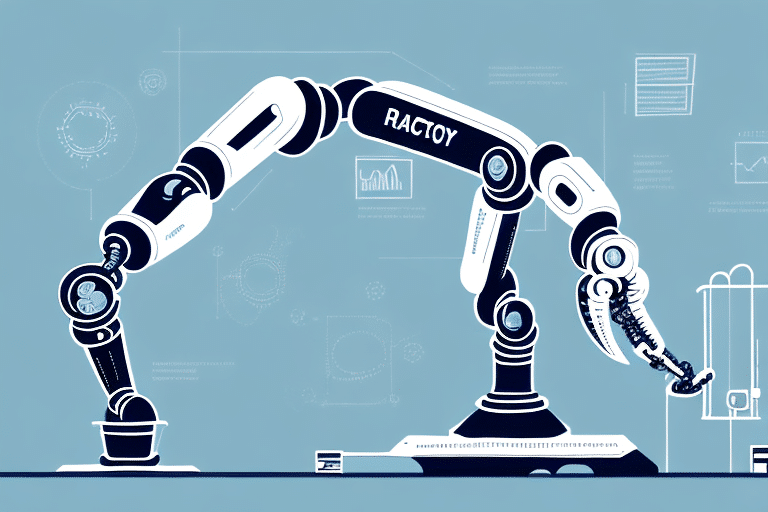Embracing the Power of AI in Operational Optimization
In today's fast-paced business environment, leveraging the power of Artificial Intelligence (AI) for operational optimization has become increasingly essential. AI transforms business operations by streamlining complex processes, enhancing efficiency, and enabling data-driven decision-making. This article explores various facets of AI in operational optimization, including its foundational concepts, implementation strategies, benefits, challenges, industry applications, and future trends.
Understanding AI in Operational Optimization
Artificial Intelligence refers to the development of computer systems capable of performing tasks that typically require human intelligence, such as reasoning, learning, and perception. In the context of operational optimization, AI enhances business processes by automating repetitive tasks and analyzing large datasets to uncover patterns and insights that inform strategic decisions.
Key Components of AI in Operations
- Machine Learning: Enables systems to learn and improve from experience without being explicitly programmed.
- Natural Language Processing (NLP): Allows machines to understand and interpret human language.
- Computer Vision: Empowers machines to interpret and make decisions based on visual data.
Benefits of AI in Operational Optimization
- Increased Efficiency: Automates manual tasks, reducing time and resource expenditure.
- Cost Savings: Identifies areas for cost reduction through process optimization.
- Enhanced Decision-Making: Provides actionable insights based on data analysis.
- Scalability: Facilitates the handling of large volumes of data and operations seamlessly.
Implementing AI: A Comprehensive Guide
Successfully integrating AI into business operations requires a systematic approach. Below are the key steps involved in the implementation process:
1. Identifying Opportunities for AI Integration
Begin by analyzing existing processes to identify areas where AI can add value. Common applications include predictive maintenance, supply chain optimization, and customer service automation.
2. Selecting the Right AI Solutions
Choose AI technologies and tools that align with your business needs. Consider factors such as scalability, ease of integration, and vendor support.
3. Data Management and Preparation
Ensure that your data is clean, accurate, and well-organized. High-quality data is crucial for the effectiveness of AI algorithms. Implement robust data governance practices to maintain data integrity.
4. Pilot Testing
Start with a pilot project to test the AI solution in a controlled environment. This allows for evaluating performance, identifying potential issues, and making necessary adjustments before a full-scale rollout.
5. Full-Scale Implementation
Upon successful pilot testing, deploy the AI solution across the organization. Ensure that all relevant stakeholders are trained and that the system is monitored continuously for performance and reliability.
Overcoming Challenges in AI Integration
While AI offers numerous benefits, integrating it into existing operations presents several challenges:
1. High Implementation Costs
The initial investment for AI technologies can be substantial, especially for small and medium-sized enterprises. However, the long-term benefits often justify the costs. According to a McKinsey report, AI can potentially add $13 trillion to the global economy by 2030.
2. Skilled Personnel Shortage
There is a significant demand for professionals skilled in AI and data science. Investing in training and development or partnering with specialized firms can help bridge this gap.
3. Data Privacy and Security
Implementing AI requires handling vast amounts of data, raising concerns about data privacy and security. Adhering to regulations like the General Data Protection Regulation (GDPR) is essential to mitigate risks.
4. Ethical Considerations
AI deployment raises ethical questions, such as potential job displacement and bias in decision-making. Establishing ethical guidelines and ensuring transparency can address these concerns.
Industry Applications of AI in Operational Optimization
AI's versatility makes it applicable across various industries, each leveraging it to enhance operational efficiency and drive innovation.
1. Healthcare
AI assists in patient diagnosis, personalized treatment plans, and predictive analytics for disease outbreaks. For instance, AI algorithms can analyze medical images to identify anomalies with high accuracy.
2. Manufacturing
In manufacturing, AI optimizes production processes, predicts equipment failures, and manages supply chains. Predictive maintenance powered by AI can reduce downtime by up to 50%, as reported by Gartner.
3. Retail
Retailers use AI for inventory management, personalized marketing, and enhancing customer experiences through AI-powered chatbots and recommendation systems.
4. Finance
AI enhances fraud detection, automates trading, and improves customer service in the finance sector. Machine learning models can analyze transaction patterns to identify and prevent fraudulent activities.
5. Transportation and Logistics
AI optimizes routing, manages fleets, and improves supply chain logistics. Autonomous vehicles and drones are examples of AI applications revolutionizing the transportation industry.
Future Trends and Best Practices in AI-Driven Operational Optimization
The future of AI in operational optimization is poised for significant advancements. Businesses must adopt best practices to stay competitive and maximize the benefits of AI technologies.
1. Integration with Emerging Technologies
Combining AI with technologies like the Internet of Things (IoT) and blockchain can unlock new levels of operational efficiency and transparency.
2. Continuous Learning and Adaptation
AI systems should be designed to learn continuously from new data, ensuring they remain relevant and effective in dynamic environments.
3. Focus on Explainability
Ensuring that AI decision-making processes are transparent and explainable builds trust and facilitates better decision-making.
4. Robust Data Governance
Implementing strong data governance frameworks ensures data quality, compliance, and security, which are critical for successful AI implementations.
5. Collaboration Between Humans and AI
Encouraging collaboration between human workers and AI systems can enhance productivity and foster innovation. AI should be viewed as a tool that augments human capabilities rather than replacing them.
Measuring the ROI of AI in Operational Optimization
Assessing the return on investment (ROI) for AI initiatives involves evaluating both tangible and intangible benefits. Key metrics include:
- Cost Savings: Reduction in operational costs due to automation and process optimization.
- Productivity Gains: Increase in output and efficiency as a result of AI-driven processes.
- Revenue Growth: Enhanced sales through personalized marketing and improved customer experiences.
- Customer Satisfaction: Higher customer satisfaction scores due to faster and more accurate services.
Businesses should compare these benefits against the total costs of AI implementation, including technology investment, training, and maintenance, to determine the overall ROI.
Addressing Common Misconceptions About AI in Operations
Several misconceptions hinder the adoption of AI in operational optimization. Addressing these can facilitate smoother integration and acceptance:
1. AI is Only for Large Enterprises
While large companies may have more resources to implement AI, small and medium-sized businesses can also benefit from scalable AI solutions tailored to their needs.
2. AI Will Replace Human Jobs
AI is designed to augment human capabilities, handling repetitive tasks and allowing employees to focus on more strategic and creative roles. This can lead to job transformation rather than displacement.
3. AI is Inherently Biased
AI systems can reflect the biases present in their training data. However, with proper data management and ethical guidelines, biases can be minimized, ensuring fair and equitable outcomes.
4. AI Implementation is Complex and Time-Consuming
Advancements in AI technologies and the availability of user-friendly platforms have simplified the implementation process, making it more accessible to businesses of all sizes.
Case Studies of Successful AI Implementations
Examining real-world examples can provide valuable insights into the effectiveness of AI in operational optimization:
1. Amazon's Supply Chain Optimization
Amazon leverages AI to manage its vast supply chain, utilizing predictive analytics to forecast demand, optimize inventory levels, and enhance delivery logistics. This has contributed to Amazon's ability to offer rapid and reliable delivery services.
2. Siemens' Predictive Maintenance
Siemens employs AI-driven predictive maintenance to monitor and maintain its manufacturing equipment. By analyzing sensor data, Siemens can predict equipment failures before they occur, reducing downtime and maintenance costs.
3. Healthcare's AI-Powered Diagnostics
Healthcare providers are using AI to improve diagnostic accuracy. For example, AI algorithms analyze medical imaging data to detect conditions like cancer at earlier stages, leading to better patient outcomes.
Future Trends in AI for Operational Optimization
The landscape of AI in operational optimization is continually evolving. Key future trends include:
1. Enhanced AI Personalization
AI systems will become more adept at personalizing services and products based on individual customer preferences and behaviors, further enhancing customer satisfaction and loyalty.
2. Integration with Edge Computing
Combining AI with edge computing will enable real-time data processing and decision-making at the source, reducing latency and improving the responsiveness of operations.
3. Expansion of AI in Sustainability Efforts
AI will play a critical role in promoting sustainability by optimizing energy usage, reducing waste, and improving resource management across various industries.
4. Advances in Explainable AI (XAI)
Future AI systems will offer greater transparency and explainability, making it easier for businesses to understand and trust AI-driven decisions.
Conclusion
The integration of AI into operational optimization presents a transformative opportunity for businesses across all industries. By automating processes, enhancing efficiency, and providing actionable insights, AI enables organizations to stay competitive in a rapidly evolving market. While challenges such as implementation costs, data privacy, and ethical considerations exist, adopting best practices and leveraging reputable AI solutions can mitigate these hurdles. As AI technology continues to advance, its role in driving operational excellence and fostering innovation will only become more pronounced, positioning businesses for sustained success in the digital age.




















